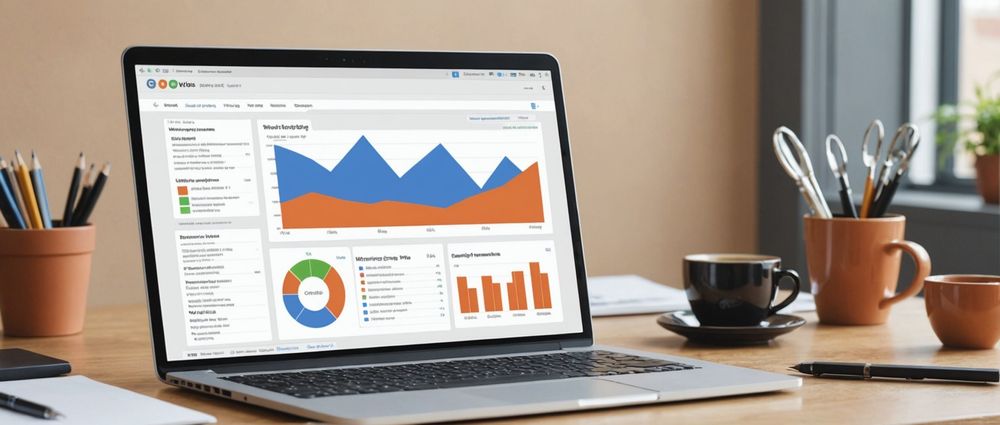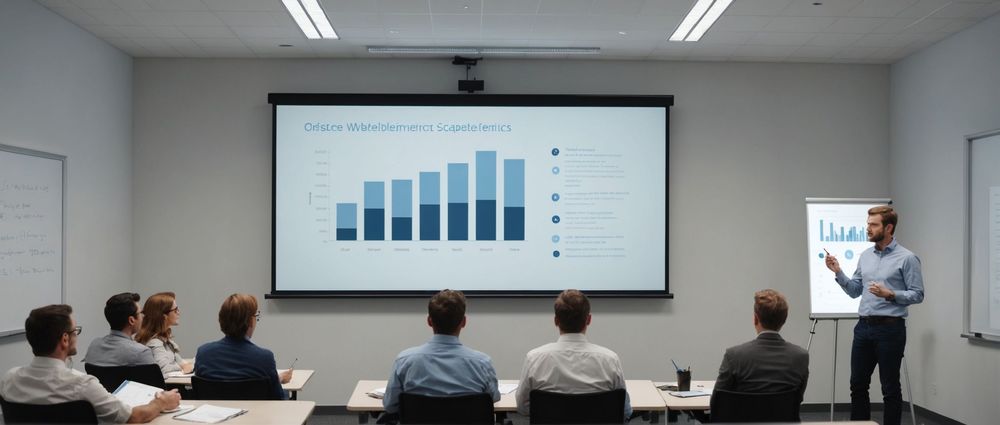Website growth is the main aim for most businesses in the digital era. Understanding which metrics to track is crucial to ensuring your website continues to thrive in 2024 and beyond. This article delves into the key website metrics that can help gauge and track your website’s performance, setting the stage for continuous improvement and growth.
1. Organic Traffic

Organic traffic is a critical metric that indicates how many visitors are arriving at your site through search engines like Google. This metric is an essential indicator of your SEO efforts and content strategy. An increase in organic traffic reflects your ability to attract users through high-quality, relevant content and effective keyword optimization.
Continuously monitor your organic traffic to identify trends and adjust your SEO strategies accordingly. Consider segmenting this traffic by new and returning visitors to understand user behavior better. Tools like Google Analytics can help you dive deeper into the data, showing which pages attract the most organic traffic and which keywords are driving these visits.
2. Conversion Rate

The conversion rate measures the percentage of visitors who take a desired action on your website, such as making a purchase, filling out a form, or signing up for a newsletter. This metric is crucial as it reflects the effectiveness of your website in driving business goals.
To improve your conversion rate, analyze user behavior using heatmaps and user recordings. A/B testing different elements of your site, such as call-to-action buttons, headlines, and images, can provide insights into what works best for your audience. High conversion rates usually indicate a user-friendly website and compelling value proposition.
3. Bounce Rate and Average Session Duration

Bounce rate and average session duration are closely linked and provide insights into user engagement. The bounce rate represents the percentage of visitors who leave after viewing just one page. A high bounce rate may indicate that your content isn’t engaging or that your site has usability issues.
Average session duration tells you how long visitors stay on your site during a single session. Longer sessions suggest that users find your content valuable and engaging. To reduce your bounce rate and increase session duration, focus on creating high-quality, relevant content and improving the overall user experience. Navigate users smoothly between related pages with internal linking to keep them engaged.
4. Pages per Session
Pages per session is a metric that indicates the number of pages a user views during an average visit. This metric helps you understand user engagement and the effectiveness of your site’s navigation and content structure. Higher pages per session suggest that users are finding your site easily navigable and content engaging.
Improve this metric by ensuring your website has clear and intuitive navigation. Use related posts and content recommendations to guide users through your site. Regularly update and expand your content to keep it fresh and relevant. Most importantly, ensure that your site is fast and mobile-friendly to cater to all users.
5. Customer Lifetime Value (CLV)
Customer Lifetime Value (CLV) is a forward-looking metric that estimates the total revenue you can expect from a single customer account. It’s a crucial metric for long-term growth as it helps you understand the value of retaining customers versus continuously acquiring new ones.
To calculate CLV, follow these steps:
- Calculate the average purchase value.
- Determine the average purchase frequency rate.
- Calculate the customer value: Average Purchase Value x Average Purchase Frequency Rate.
- Determine the average customer lifespan (in years).
- Calculate CLV: Customer Value x Customer Lifespan.
By understanding CLV, you can allocate resources more effectively, focusing on strategies that improve customer retention and loyalty, leading to sustainable growth.
Conclusion
Tracking the right website metrics is vital for growth in 2024 and beyond. Metrics like organic traffic, conversion rates, bounce rate, average session duration, pages per session, and customer lifetime value provide valuable insights into your website’s performance and user engagement. By regularly analyzing these metrics and adjusting your strategies accordingly, you can ensure continuous improvement and sustainable growth for your site.
FAQ
1. What is the most important website metric to track?
While all metrics are essential, organic traffic is often considered the most critical, as it shows your site’s visibility and effectiveness in attracting visitors through search engines.
2. How can I improve my website’s conversion rate?
Improving your conversion rate involves optimizing various elements such as your call-to-action buttons, headlines, forms, and overall user experience. Conducting A/B tests can help determine what changes drive better results.
3. Why is a high bounce rate bad?
A high bounce rate typically indicates that visitors are not finding what they are looking for or that your website has usability issues. It suggests that users leave quickly without interacting further with your site.
4. How can I keep users on my site longer?
To keep users on your site longer, ensure your content is high-quality and relevant. Improve site navigation, include internal links, and provide content recommendations to guide users through your site.
5. What tools can help me track website metrics?
Tools like Google Analytics, SEMrush, and Ahrefs are excellent for tracking a wide range of website metrics, from traffic and user behavior to SEO performance and more.